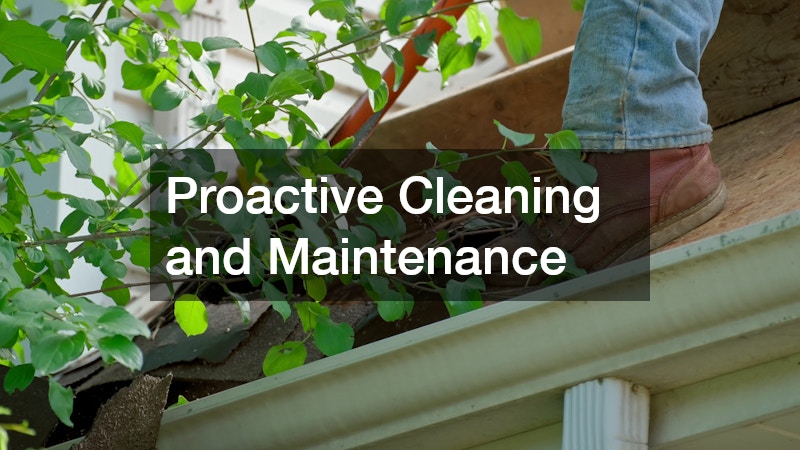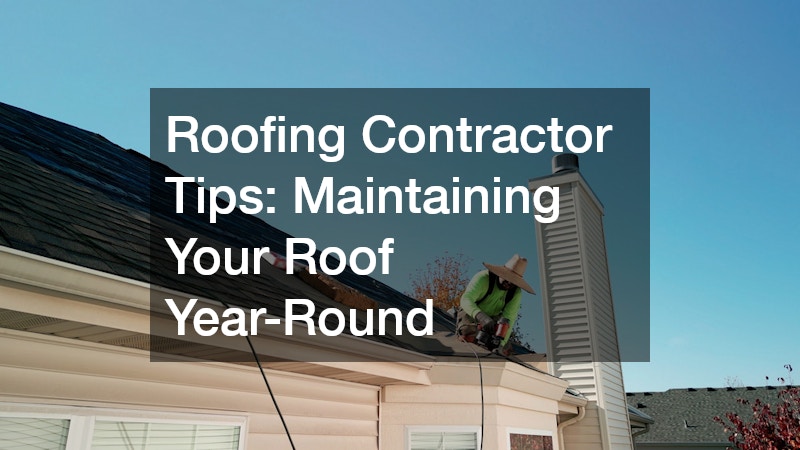Ensuring your roof is in top condition throughout the year is crucial for protecting your home and prolonging the lifespan of your roofing materials. In this article, we’ll provide expert tips and advice from roofing contractors on how to maintain your roof effectively. Regular maintenance and inspections can prevent costly repairs and enhance the aesthetic appeal and value of your home.
Performing Regular Inspections
Performing regular roof inspections is an essential part of home maintenance that shouldn’t be overlooked. It is generally recommended to inspect your roof at least twice a year, ideally in spring and fall, to catch any seasonal damage that may have occurred. This proactive approach allows homeowners to promptly address any minor issues before they escalate into major problems.
In addition to the biannual inspections, it’s important to conduct checks after severe weather events such as storms or heavy snowfall. These natural occurrences can lead to unexpected damage that might not be immediately visible. Regular inspections help in maintaining the structural integrity of your roof and, in turn, the safety of your home.
Identifying Key Signs of Damage
During inspections, it’s crucial to look for key signs of damage that could compromise your roof’s performance. Common indicators include missing, cracked, or curled shingles, which suggest aging materials or severe weather impact. Another warning sign is the presence of granules in gutters, indicating that the shingles might be deteriorating.
Furthermore, inspect for any sagging areas in your roof, which could point to structural damage beneath the surface. Leaking water spots on your ceiling should also be a red flag, as they may indicate underlying issues needing immediate attention. Identifying these signs early can save homeowners from more extensive repairs in the future.
Hiring Professional Inspectors
While homeowners can perform basic visual inspections, hiring a professional roofing inspector brings added expertise. Professional inspectors are trained to spot subtle issues that untrained eyes might miss, thus offering a more thorough evaluation. Their insights can help prioritize repairs and give a clearer idea of the roof’s overall health.
Professionals also bring specialized tools that can detect problems hidden beneath the roofing surface. Instruments such as moisture meters or infrared cameras can identify leaks or thermal anomalies unseen to the naked eye. Hiring a professional is particularly recommended after major weather events or if the roof is over ten years old.
Choosing Materials for Hot Climates
In hot climates, selecting the appropriate roofing materials can significantly impact your home’s energy efficiency and comfort. Light-colored and reflective materials are ideal for these regions as they minimize heat absorption and keep indoor spaces cooler. Metal roofing is a popular choice due to its durability and reflective properties, which help reduce cooling costs.
Clay tiles also perform exceptionally well in warm climates, providing excellent insulation and longevity. These tiles are designed to accommodate natural expansion and contraction, making them resilient to temperature fluctuations. Furthermore, the natural ventilation that occurs under these tiles can aid in reducing the heat load on a building.
Finding Durable Materials for Cold and Snowy Regions
In cold regions with heavy snowfall, choosing the right roofing material is crucial for withstanding the winter elements. Asphalt shingles are a common choice due to their affordability and reliability in shedding snow. However, homeowners should ensure that they select a high-quality variety designed to endure harsh winter conditions.
Metal roofing is also highly recommended for snowy climates, thanks to its snow-shedding capabilities and resistance to ice dams. The smooth, slippery surface of metal roofs allows snow to slide off easily, preventing heavy accumulation that can lead to structural stress. Additionally, metal roofing is known for its exceptional durability and low maintenance requirements.
Proactive Cleaning and Maintenance
Regular cleaning and maintenance are vital for preventing mold and algae growth on roofs. Homeowners should routinely remove debris, such as leaves and twigs, from their roofs and gutters to enhance water drainage. Using a soft brush or low-pressure wash can effectively clean algae without damaging the roofing material.
In addition to cleaning, applying zinc or copper strips along the ridge can inhibit the growth of algae and mold, as rainwater naturally disperses these metals over the roof’s surface. It’s also beneficial to trim overhanging tree branches to increase sunlight exposure and reduce shade, discouraging mold and algae proliferation.
Preventive Treatment Options
There are several preventive treatments available for homeowners wishing to protect their roofs from mold and algae. Chemical treatments, such as algaecides or fungicides, can be professionally applied to deter growth effectively. These solutions are designed to be environmentally safe while offering prolonged protection.
Maintaining your roof year-round requires a combination of regular inspections, choosing the right materials for your climate, and proactive cleaning and treatment. By following these expert tips, you can ensure the longevity and durability of your roof. Incorporating these strategies not only protects your investment but also enhances your home’s safety and comfort.


